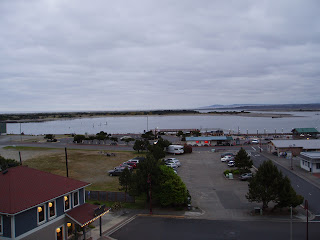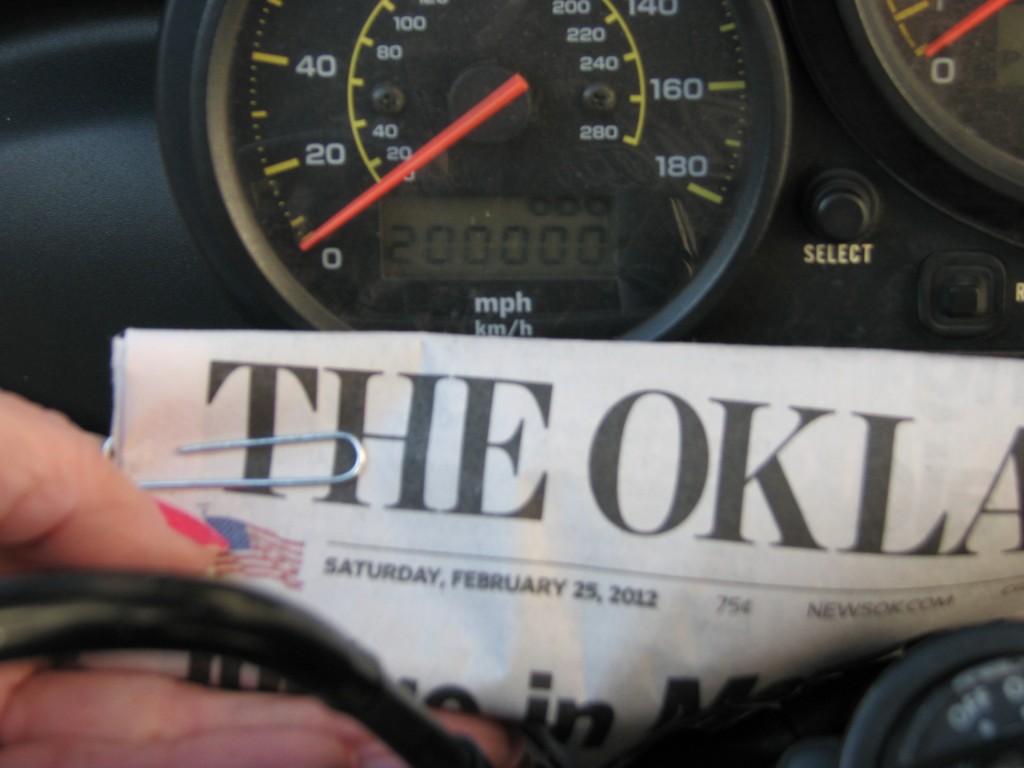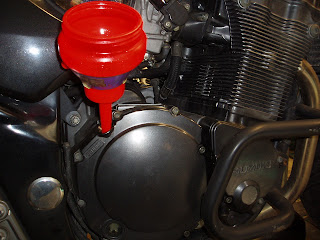Long-Term Report
In researching gear we'd need for our 2010 Alaska tour we were warned about flying rock hazards on the Alaska Highway. My touring gloves at the time were a pair of
Helimot B365 deer skin gloves. While excellent in quality and construction, Helimot doesn't believe in hard armor and I was concerned that the knuckle protection wouldn't be adequate. So I purchased a pair of
Motoport kevlar racing gloves.
For those who don't know Motoport, they are a small motorcycle apparel manufacturer in Southern California who specialize in textile commuting and touring suits. They are also an Internet cult phenomenon and about as contentious as motorcycle oil in online forums, owing in part to the claims and wording on their web site. The Motoport controversy deserves its own post.
There are many excellent options for protective riding gloves so why buy a glove from a controversial company constructed of questionable materials? First, about seven years ago I was in the market for a commute suit and I got curious about the company's gear. I took a chance and bought a Motoport stretch kevlar touring suit and found it to be well-constructed and comfortable. I expected the same from their gloves. Second, in my experience the kevlar material dries faster than leather and I thought that might be important on a trip to Alaska. Third, I thought a textile glove might be more comfortable for long trips than a leather racing glove. Finally I thought it was an interesting and unique idea to make gloves out of stretch kevlar and was interested in giving it a try.
I was warned that the sizing ran small so I ordered a size larger than usual. I'm usually between medium and large, so I ordered large and they fit well.
These are recent photos of the gloves. They're nearly three years old and I've ridden over 40k miles in them.
 |
| Motoport kevlar racing gloves |
Overall the gloves performed well on the Alaska trip and they've been good commuting gloves. The stretch kevlar fabric is interesting, it feels a little like thick spandex and does not seem like it would resist tearing or abrasion at all. Yet, after three years of constant use the gloves show almost no wear and the stitching is still in good shape. There is some insulation or padding in the gloves so they're comfortable in temperatures down to the upper 40s. There is some air flow in the knuckle protector so they're not terrible in hot weather. I've rated the gloves in six different categories below: comfort, durability, protection, control feel, useability, and value.
Comfort: 4.5/5
My Helimot B365s are the comfort standard by which I measure all gloves. The Motoports are not quite there but the kevlar material is surprisingly comfortable. I can ride in them all day without any glove-related hand discomfort. I haven't noticed any issues with internal seams or stitching causing irritation. The padding dulls some bar vibration. Combined with the air flow this is a good 3-season glove.
Durability: 5/5
This is where most gloves fall short in my experience, and where the Motoport gloves excel. After 40k miles the gloves show very little wear. Many areas are double-stitched and have double-layers of kevlar fabric. None of the stitching is coming apart and the material hasn't worn through anywhere. I had a pair of Held racing gloves I could see my fingertips through in less time. I expect they'll go at least another couple of years.
Protection: 3/5
There are some good protective features in this glove but it is lacking in other features I consider standard in a mid-range
racing glove. This is the biggest issue I have with the glove and the reason why I wouldn't recommend it for track or high speed use. I recently emailed my concerns to Motoport but haven't heard back yet.
There is a layer of thick gray kevlar material sewn onto the palm and fingertips. This double layer is a nice feature and with the double stitching I think the glove would hold up well in a slide. The plastic knuckle protector and carbon-fiber finger sliders on the top of the glove are good protective features which I consider standard in a racing glove. There are velcro wrist closures on the top of the glove and on the cuff. This is another feature I consider standard in a racing glove. The stitching has held together well and I'm not afraid that the glove will hole or shred in a crash.
On the other hand, most purpose-built racing gloves have a gauntlet style cuff with hard armor, padding, and sliders to protect from wrist fractures and abrasion. The Motoport glove has a short cuff with no armor or padding of any kind. This is a concern. Most track-oriented gloves also feature pinky brace and roll protection and this glove has neither. The protective features seem more touring oriented than track oriented. I think a wrist or pinky fracture is a possibility in a crash at speed. I would highly recommend wearing a 3rd-party wrist brace with this glove.
Control Feel: 3/5
Control feel is a trade-off between comfort, protection, and sensitivity, and it is hard to get it right. The double layer of kevlar in the palms, while a good protective feature, also makes control feel slippery. This has improved and become tolerable with age, but compared to a kangaroo palm glove, or even the gel-padded B365s, the feel is less confidence-inspiring.
Useability: 2.5/5
This glove is good in a variety of in-season temperatures thanks to the light insulation and air flow in the knuckle protection. The padding in the palms makes day-long rides more bearable than a thin-skinned kangaroo palm. However there are no additional features to make the gloves easy to use or wear. My biggest complaint is that the short narrow cuff is difficult to get over jacket sleeves. I've tried wearing my sleeves over the cuff and this seems unconventional and wrong. I've never worn any other gloves under my sleeves. Additionally there is nothing to prevent the top wrist closure from escaping its plastic ring, which it often does. Finally, many touring gloves include a visor wiper on the left forefinger which this glove lacks.
Value: 3.5/5
On the Motoport web site it says, "You can't compare this glove with any other glove." In some respects that's actually true. It's difficult to know what standard of comparison to use to asses the value of Motoport's stretch kevlar gloves relative to other gloves. I've found no other synthetic gloves I'd trust at highway speeds. The closest I found would be
Aerostich Vegan Gloves. I've never worn a pair so comparison is speculative, but at $57 with some reviews claiming the stitching came apart under normal use, I doubt the Aerostich gloves are in the same category.
On the other hand, relative to leather racing gloves in the same price range, Motoport's kevlar gloves lack safety features I consider standard in a mid-range track-oriented glove. Specifically pinky protection and a gauntlet-style cuff with wrist armor. From the standpoint of hand protection, Alpinestars, Teknic, and Icon make track-oriented gloves in a similar price range with superior protective features.
Finally, in comparison with my Helimot B365 touring gloves, I believe the Motoports are on par in terms of safety and comfort. While they lack some of the useability features they also cost about $50 less, and I believe they wear slightly better. However Motoport does not market their kevlar gloves as touring gloves, they call them "Kevlar Racing Gloves." This is perhaps a bit misleading and throws my rating system off, since I believe the Motoport glove is really a touring glove.
 |
| Helimot B365 and Motoport |
Conclusion
Motoport continues to offer unique and often controversial products for people who enjoy trying something different. I found their Kevlar Racing Gloves to be a lot like their other products I've tried: well-constructed, comfortable, different from anything else on the market, and perhaps falling a bit short of their ambitious marketing claims. I'd rank it as one of the better touring glove options available today. However it is marketed as a racing glove and as such falls short in protective track-oriented features.



























































